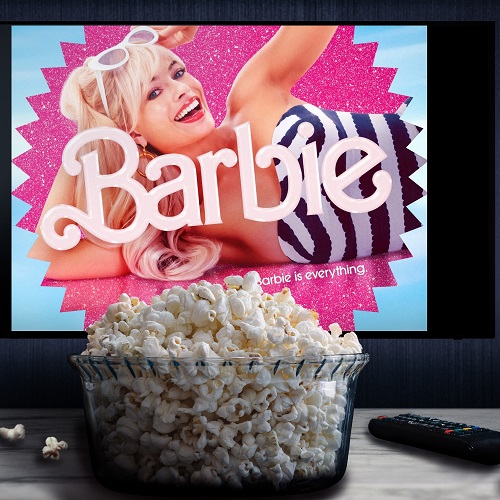28 September 2023
 Parents are being asked to have a say on whether Australia’s media classification system is effective in informing decisions around age-appropriate films and video games for children.
Parents are being asked to have a say on whether Australia’s media classification system is effective in informing decisions around age-appropriate films and video games for children.
University of South Australia media and communications expert Dr Fae Heaselgrave is conducting research with parents and guardians about the media classification system and the role of media ratings (G, PG, M, MA15+) in Australia.
In Australia, media ratings are applied to films, computer games and some (mostly adult) publications based on the level of content elements such as violence, language and nudity, and the potential impact of these elements on audiences.
"As a parent myself, I understand the need to find quick and easy information about what movies or video games are suitable for kids to play,” Dr Heaselgrave says.
“Media ratings are often the first indicator parents rely on when making decisions about appropriate media for their children.
“In Australia, we have two ratings that apply to content considered suitable for children up to the age of 15 years - G, which means content is appropriate for people of all ages, and PG which means content is suitable for children up to 15 years old under the recommended guidance of parents and carers.”
The Federal Government’s National Classifications Scheme (NCS) is responsible for determining media ratings and is the official source of consumer advice on the suitability of films and video games for kids.
The scheme was last reviewed in 2020 (the Stevens Review). The review suggested that an age-based ratings system, such as ‘8’ or ‘PG-13’, could provide more clarity to parents about the age-appropriateness of films and games, however found that more research was needed to determine the benefits of such a move.
Dr Heaselgrave says the task of determining whether a PG-rated film or video game is suitable for children of different ages can be very difficult for parents and carers.
“Barbie is one example of how the current media classification system can be confusing for parents,” she says. “In Australia, Barbie was rated PG due to the presence of some crude humour and inuendo, some coarse language and slapstick violence, but in the UK and the US, Barbie was rated 12A and PG-13 respectively, meaning the movie was considered unsuitable for children under 13 years.
“Age-based ratings provide a clearer indication of the appropriateness of media content according to a child’s stage of development. The PG rating in Australia, however, means parents and guardians need to exercise more discretion and conduct more research about a movie like Barbie to make an informed decision about whether the film is suitable for their 7-year-old, their 12-year-old or only appropriate for older adolescents.”
Professor Elizabeth Handsley, President of the advocacy group Children and Media Australia, has long been campaigning for changes to the way media is rated in Australia.
“The NCS takes an impressionistic approach to assessing the impact of media content on audiences, but we need a system that is informed by research and child development experts,” she says.
“Such a system exists in the Netherlands, where experts develop and regularly review a code for movies and video games that gives age-based audience age ratings. For example, ‘5+’ means content is suitable for those aged five and up.
“The introduction of similar ratings here would remove the vagueness of the existing PG rating and would offer meaningful guidance to parents about the suitability of content for children.”
The Federal Government recently announced several proposed reforms to the NCS, including allowing industry to self-classify content, making it simpler and more cost effective for the film, streaming video, and games industries to classify their content in line with Australian guidelines.
However, Dr Heaselgrave says this doesn’t go far enough in representing the concerns or needs of parents in Australia. Parents, she says, are too commonly left out of the conversation, with the focus instead on industry compliance.
“Parents and guardians are the primary users of the NCS and they’re the ones at the forefront of responsibility when allowing their children to consume certain media. They should be front of mind when proposing changes to classification processes,” Dr Heaselgrave says.
The research is being conducted with Children and Media Australia to find out what parents and guardians think about the current classifications system and whether any changes are necessary to improve its usefulness for families.
“We are optimistic that these important voices will help shape the future policy agenda around media classification in Australia.”
Have your say in the survey: unisa.edu.au/survey-media-classification
END
Notes to editors:
By law, films, video games and some (mostly adult) publications must be classified into one of following categories; General (G), Parental Guidance (PG), Mature (M), Mature Accompanied (MA 15+) or Restricted (R 18+). TV content is regulated by the Australian Communications and Media Authority, and music and advertisements by industry regulators.
Under the Classification (Publications, Films and Computer Games) Act 1995, the National Classification Scheme oversees the review and rating of media content. The Scheme also covers enforcement of ratings with media industries.
Media contact: Melissa Keogh, UniSA Media Centre M: +61 403 659 154 E: Melissa.Keogh@unisa.edu.au


